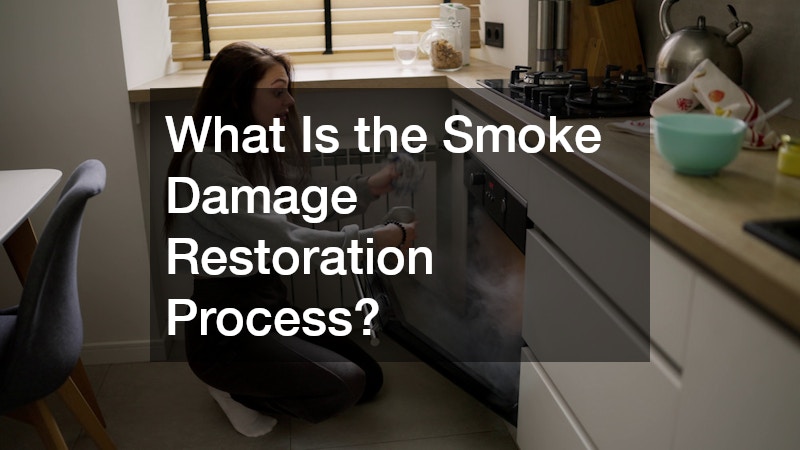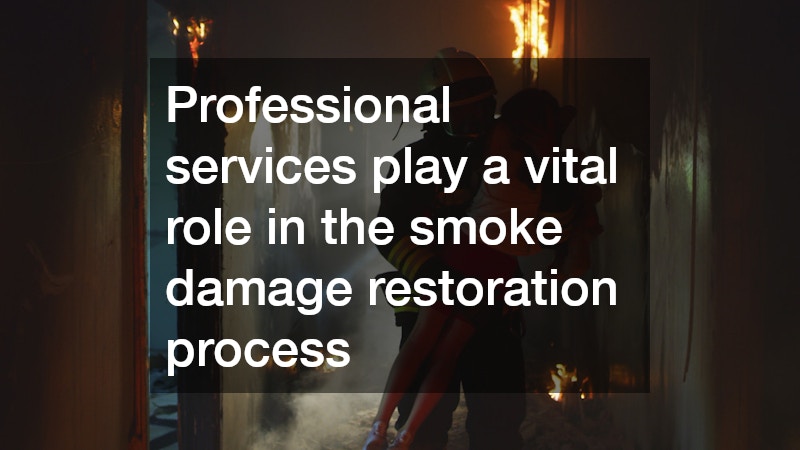

Smoke damage is often underestimated, but it can have significant implications on property and health. When a fire occurs, the immediate concern is usually the flames, yet the subsequent smoke can be just as destructive. This is because smoke is composed of a mixture of particles and gases that can penetrate into surfaces and linger in the air.
The particles in smoke can cause discoloration and permanently affect the surfaces within a building. Walls, ceilings, and furniture can all suffer from the staining effects of smoke.
More insidiously, smoke can infiltrate HVAC systems, redistributing soot particles and odors throughout the building long after the fire is out.
The health implications of smoke damage are also serious. The fine particles can be inhaled, causing respiratory issues, skin irritation, and other health complications. This is especially concerning for sensitive groups such as children and the elderly. Therefore, understanding and addressing smoke damage is critical after a fire event.
Steps Involved in Restoring Smoke Damage
The smoke damage restoration process is thorough and involves several critical steps to ensure a comprehensive cleanup. Initially, a detailed inspection of the affected area is conducted to assess the extent of the smoke damage. This assessment is crucial to determine the scope of work required and to develop an effective restoration plan.
Once the assessment is complete, the next step is to secure the property if necessary. This might involve boarding up windows or covering the roof to prevent further damage from weather elements. It is also essential to ventilate the space to allow for the circulation of fresh air, helping to disperse lingering smoke and odors.
Following these initial steps, the active cleaning process begins. This includes removing soot from surfaces, cleaning and sanitizing affected areas, and deodorizing to eliminate persistent smoke odors. Special equipment, such as industrial vacuums and air scrubbers, might be used to achieve effective results. The goal is to restore the property as closely as possible to its pre-damage state.
Utilizing Professional Expertise in Smoke Damage Restoration
Professional services play a vital role in the smoke damage restoration process. These experts bring specialized knowledge and equipment that ensure thorough cleaning and effective restoration. Hiring professionals typically starts with a consultation to discuss the damage and the necessary steps for restoration.
During the restoration, professionals evaluate which items can be salvaged and which need replacement. Their expertise allows them to identify hidden damage that may not be visible to the untrained eye. Additionally, professionals can utilize innovative technologies, such as thermal fogging and ozone treatments, to neutralize lingering odors.
Furthermore, professional restoration services often coordinate with insurance companies to facilitate claims. This coordination can be immensely beneficial in accelerating the restoration process and alleviating the stress on homeowners. Ultimately, professional involvement is an invaluable asset for achieving the most efficient and effective smoke damage restoration.
Long-Term Considerations After Smoke Damage Restoration
Once the initial restoration process is complete, there are long-term considerations that property owners should be aware of. It is important to monitor the property for any signs of persistent odors or residual soot, which may indicate areas that require additional attention. Regular maintenance and air quality checks can help ensure there are no underlying issues.
Incorporate preventative measures to protect against future smoke damage is also wise. Installing high-quality smoke detectors and investing in fire-resistant materials can mitigate the impact of potential future incidents. Additionally, creating an emergency response plan equips homeowners with a proactive approach to emergencies.
Finally, consider the psychological impact of experiencing a fire and smoke damage. Property owners and their families may need support to cope with the emotional aftermath. Providing or seeking appropriate counseling or support services can be beneficial in the road to recovery.








